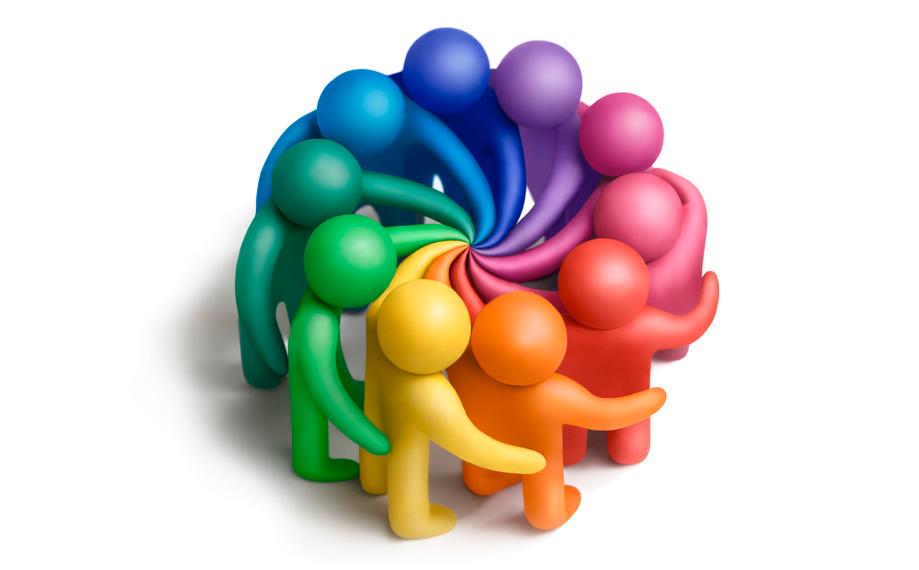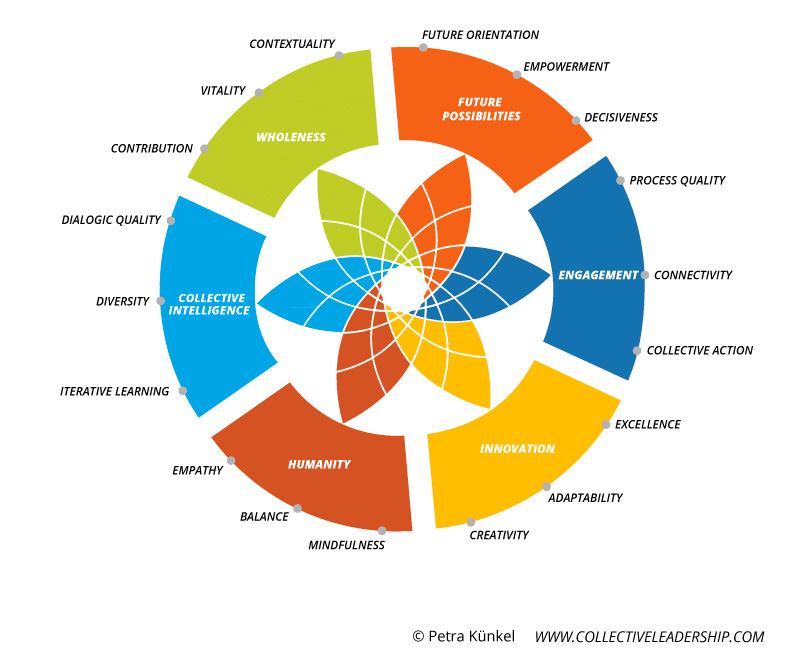Who doesn’t love a hero? A masked avenger in a shiny suit swoops in to save the meek and powerless from imminent danger and restores happiness across the land (cue the cheers and applause). But according to a report by the Center for Creative Leadership, it’s time for the heros of the workplace to hang up their capes and slip into something more collaborative.
Collective leadership is a growing trend that shifts focus from the individual “heroic leader” to groups of leaders working cooperatively toward a unified vision. What does collective leadership look like and how can impact your organization? Read on.
What is collective leadership?
The report, titled Future Trends in Leadership Development, explains that the last 50 years of leadership development cast a spotlight on the individual leader. The focus was on uncovering the qualities of a good leader and then sending generations of selected individuals through training to develop those qualities.
What’s happened though in the last decade is that the focus on building up these heroic leaders has become less effective. The complexity of the new business landscape calls for a collaborative environment where the strengths and expertise of each individual contribute to the greater health and growth of the organization. The idea of collective leadership is taking hold because it empowers all individuals within an organization to develop leadership skills in a mutually supportive team environment.

What are the benefits collective leadership?
What does this growing movement toward collective leadership have to do with you? Whether you run a small business or work for a Fortune 500 company, the core tenement of collective leadership—successful collaboration—is key to thriving in the workplace.
Think of collective leadership as a team where the strengths, skills and views of each individual are celebrated and encouraged, and titles take on a lesser role. A Huffington Post article on the subject equates collective leadership to a “flat” organizational structure.
“Corporate leaders have come to realize that titles and hierarchies can hinder company growth and competitiveness,” writes the author, Marion Chamberlain. A collective leadership structure inspires an environment where each individual feels empowered and supported and where creativity and individuality is fostered undered a unified vision.

The main benefits of a collective leadership environment boil down to:
- Complementary skills lead to more comprehensive, forward-thinking solutions. Because everyone within the group is a leader in his or her own right, a more collaborative, less ego-driven environment is able to blossom.
- Mutual support empowers each individual leader to grow. Collaboration breeds a safe space for sharing and continuing to develop each individual’s own competencies.
- Ideas are nurtured by the group and aren’t owned by one individual. How many times have you heard the battle cry of “that was my idea” in the corporate world? In the traditionally competitive corporate environment, the “me” takes precedence over the “we.”
How do you foster collective leadership?
The new thinking of collective leadership starts with a company’s dedication to fostering successful collaboration. In the sustainability world, the idea is taking hold because of the huge hurdles associated with global resources. The Collective Leadership Institute, which empowers people to lead collectively toward a sustainable future, defines the six competencies of collective leadership as:
- Future possibilities: Inspiring and empowering others and keeping an open mind to go beyond problem solving.
- Engagement: Creating trust and cohesion to cultivate meaningful collective impact.
- Innovation: Fostering creativity and acknowledging diverse expertise to drive innovation.
- Humanity: Acknowledging diversity and promoting inner balance to cultivate mutual respect.
- Collective intelligence: Inviting diverse perspectives and viewpoints, valuing contributions and fostering constructive conversations.
- Wholeness: Understanding that our actions are part of a bigger picture, acting in favor of the common good and creating networks of mutual support.

The Collective Leadership Compass illustrates the elements of each competency.
By operating within these core competencies, you encourage a group of leaders to each contribute to the bottom line. Leaders are empowered to navigate collaboration successfully and work together in an outcome-oriented and constructive co-creation environment. A move toward this model encourages individual leadership skill development not to compete but to collaborate with an impassioned commitment to the greater good of the organization.
In summary, we all need our heroes—mentors, coaches, people who inspire us to to do better. But in the workplace, we all want to be valued and contributing to the greater good. We want to make a difference and be our own heroes. So whether a full shift to collective leadership is appropropriate or not, inspiring successful collaboration is the first crucial step.
Do you see space for a collective leadership environment to bloom in your organization? How do you foster collaboration in your workplace? Chime in by posting your comments below.

